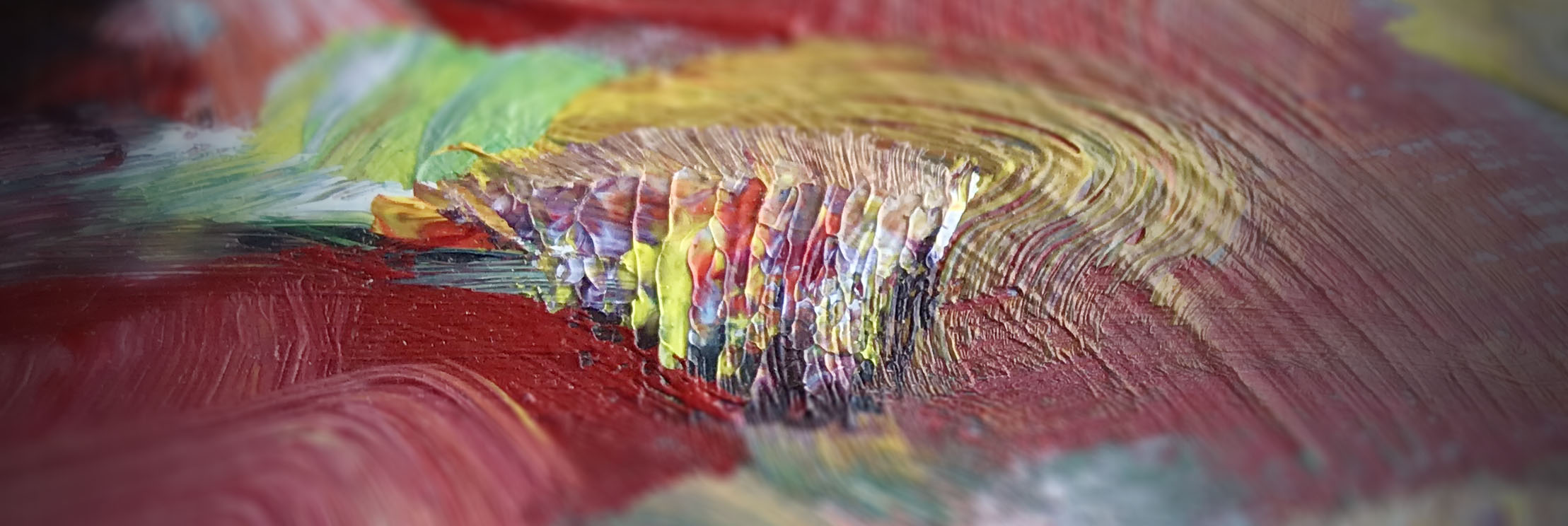April 28, 2018
The Journey of a Single Brush Stroke

There's a painting hanging in my garage that I am not particularly proud of. I keep it around because of a single brush stroke. The rest of the painting is mediocre, a still life of dismembered baby doll parts, the standard assignment given to beginning painting students. I should probably scrap the painting but that one splotch prevents me from throwing it out.
When you are learning to paint you aren’t quite sure if your work is any good. You are so invested in your work that you can’t see it the way everyone else does. This is the masterpiece hallucination effect I told you about a few weeks ago. Is my work good or not? When your painting is mounted in front of the class during a critique you have no way of knowing how it is going to go. Will the instructor rip your work to shreds or praise your accomplishment?
There was a long pause from the professor when my painting came up for critique. He paced and squinted, gathering his thoughts. And then he came to life.
“Wow!”
He grabbed some paper and blocked out everything in my painting except for a tiny two inch square.
That’s beautiful. Look at that brush stroke!
Then he launched into a passionate dissection of that single brush stroke. The journey of color from the tube to the canvas is a battle against uncertainty, second-guessing, and compromise. First, you try to figure out what color you need. Kind of a brownish tone? Then you mix the paint on your palette until it matches your intention. That’s not right, maybe it needs some red? Then you apply it to the canvas where you push and pull the colors around until it looks right. The color is right but it’s in the wrong spot. The more you work the paint the muddier it becomes. Painting is maddening because the harder you work, the worse your painting looks. It makes you want to cut your ear off.
He explained that the thing that made my brush stroke worthy of remark was the journey from tube to canvas without any muddiness, a single brush, loaded with dozens of colors, applied with one push and left unadulterated. The professor connected my brush stroke to the entirety of art history, from the imperceptible brush strokes of ancient masters to the impressionists whose colors hit the canvas unblended and raw. He explained the tension between realism and abstraction. He praised the abstract expressionists who splashed their ego directly on the canvas. For the first time we understood artists like Warhol who shunned traditional brushes in favor of inhuman printing techniques.
It might have been one of the greatest lectures in the history of any introduction to painting course. Then he removed the paper that was blocking the rest of my painting and we were transported back to the realm of mediocrity. It was just another amateur painting and I was still a struggling art student. But I was awed by my professor’s lecture, completely inspired by his enthusiasm for a single brush stroke. He saw something tiny, something nobody else noticed, and elevated it into a story that I remember two decades later.
We are all trying to make a mark, to put our dent in the universe. Much of our work suffers from the mediocrity that comes with figuring things out as we go. Our best efforts get dismissed wholesale because it is so easy to miss the stroke of brilliance hidden in the muddiness. But special moments do happen and they are right in front of us waiting for someone to champion them. The more you look, the more you see. Care enough to notice and your enthusiasm for a single brush stroke can echo for decades in the minds of the people who become infected by your passion.
Thanks for reading. Every Saturday I load my brush with words that I hope leave a mark on you. More next week. Stay creative.
Previous: A Job Interview Trap Designers Might Avoid
Next: Boiling Your Kermit